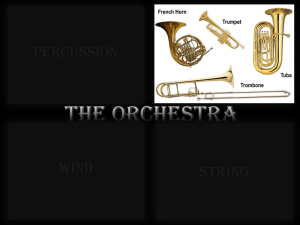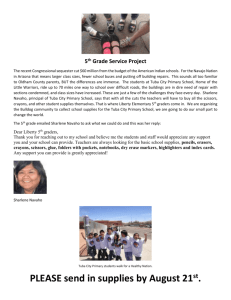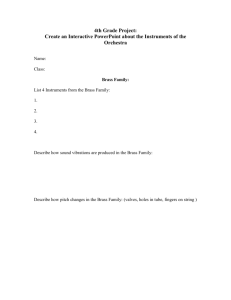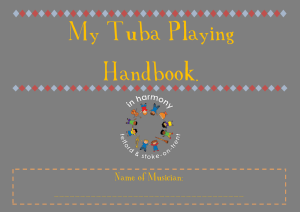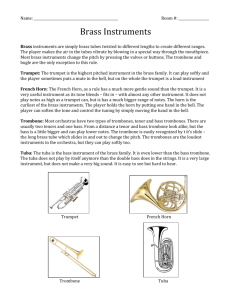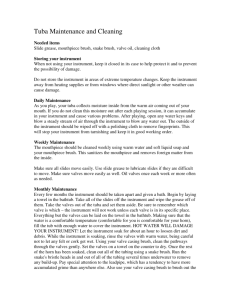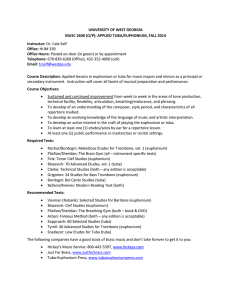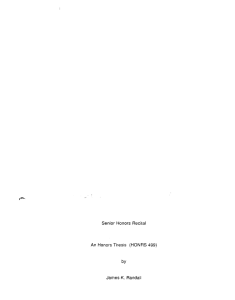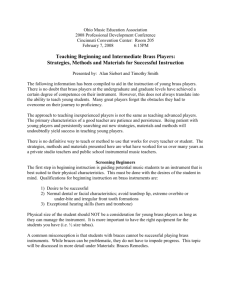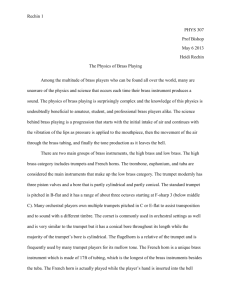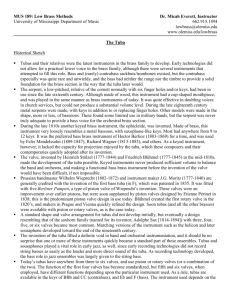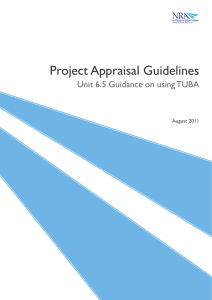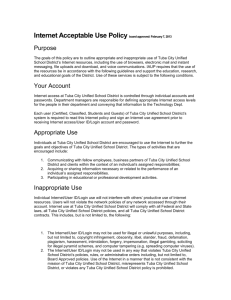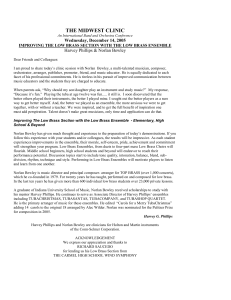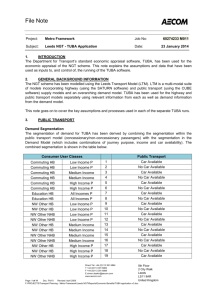Tuba - Luther High School
advertisement
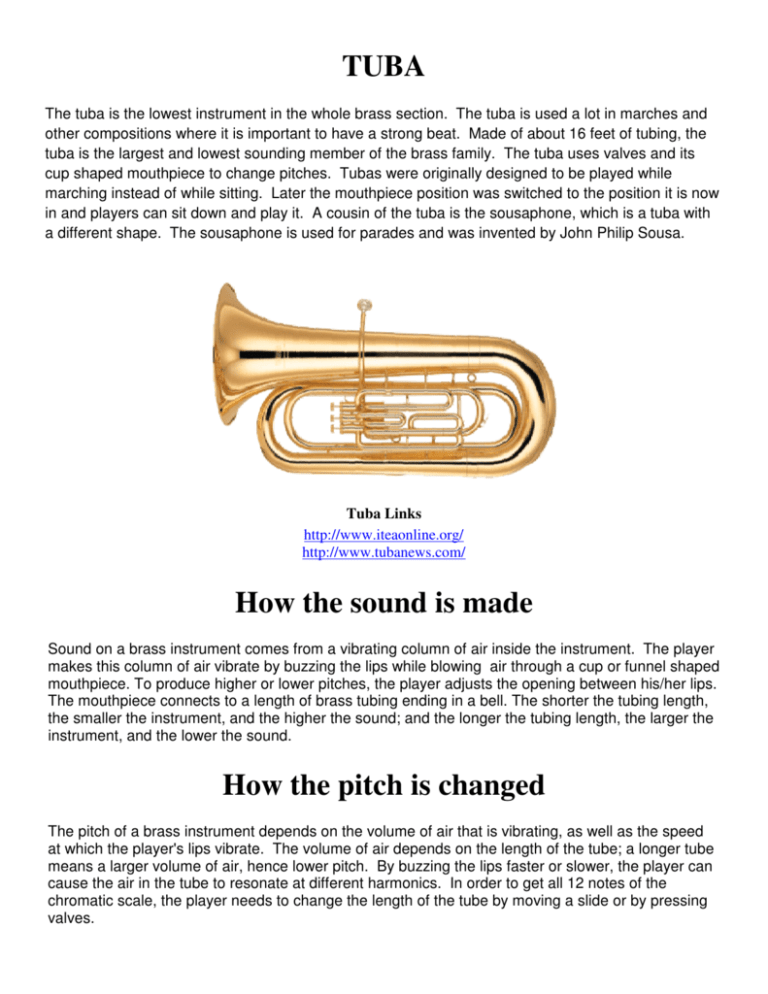
TUBA The tuba is the lowest instrument in the whole brass section. The tuba is used a lot in marches and other compositions where it is important to have a strong beat. Made of about 16 feet of tubing, the tuba is the largest and lowest sounding member of the brass family. The tuba uses valves and its cup shaped mouthpiece to change pitches. Tubas were originally designed to be played while marching instead of while sitting. Later the mouthpiece position was switched to the position it is now in and players can sit down and play it. A cousin of the tuba is the sousaphone, which is a tuba with a different shape. The sousaphone is used for parades and was invented by John Philip Sousa. Tuba Links http://www.iteaonline.org/ http://www.tubanews.com/ How the sound is made Sound on a brass instrument comes from a vibrating column of air inside the instrument. The player makes this column of air vibrate by buzzing the lips while blowing air through a cup or funnel shaped mouthpiece. To produce higher or lower pitches, the player adjusts the opening between his/her lips. The mouthpiece connects to a length of brass tubing ending in a bell. The shorter the tubing length, the smaller the instrument, and the higher the sound; and the longer the tubing length, the larger the instrument, and the lower the sound. How the pitch is changed The pitch of a brass instrument depends on the volume of air that is vibrating, as well as the speed at which the player's lips vibrate. The volume of air depends on the length of the tube; a longer tube means a larger volume of air, hence lower pitch. By buzzing the lips faster or slower, the player can cause the air in the tube to resonate at different harmonics. In order to get all 12 notes of the chromatic scale, the player needs to change the length of the tube by moving a slide or by pressing valves.
